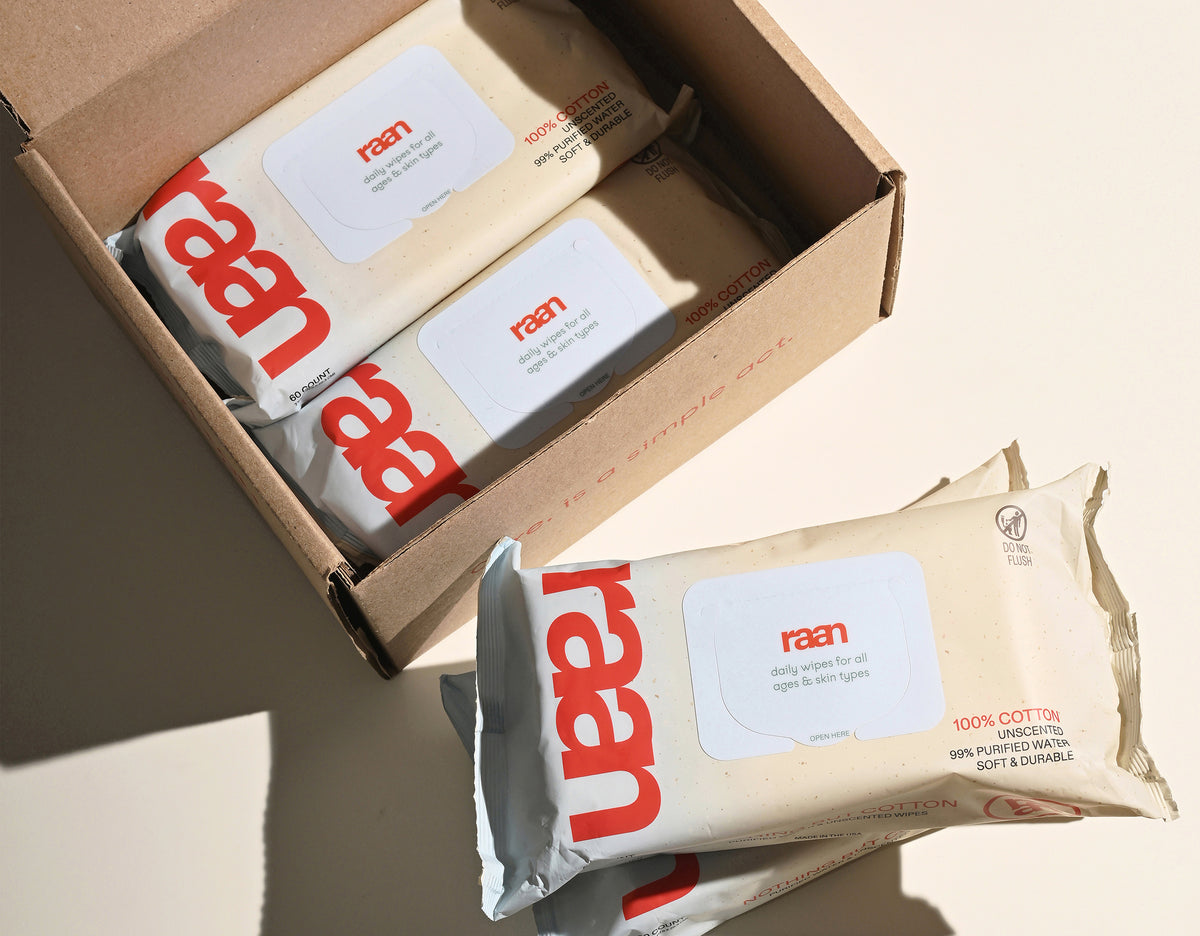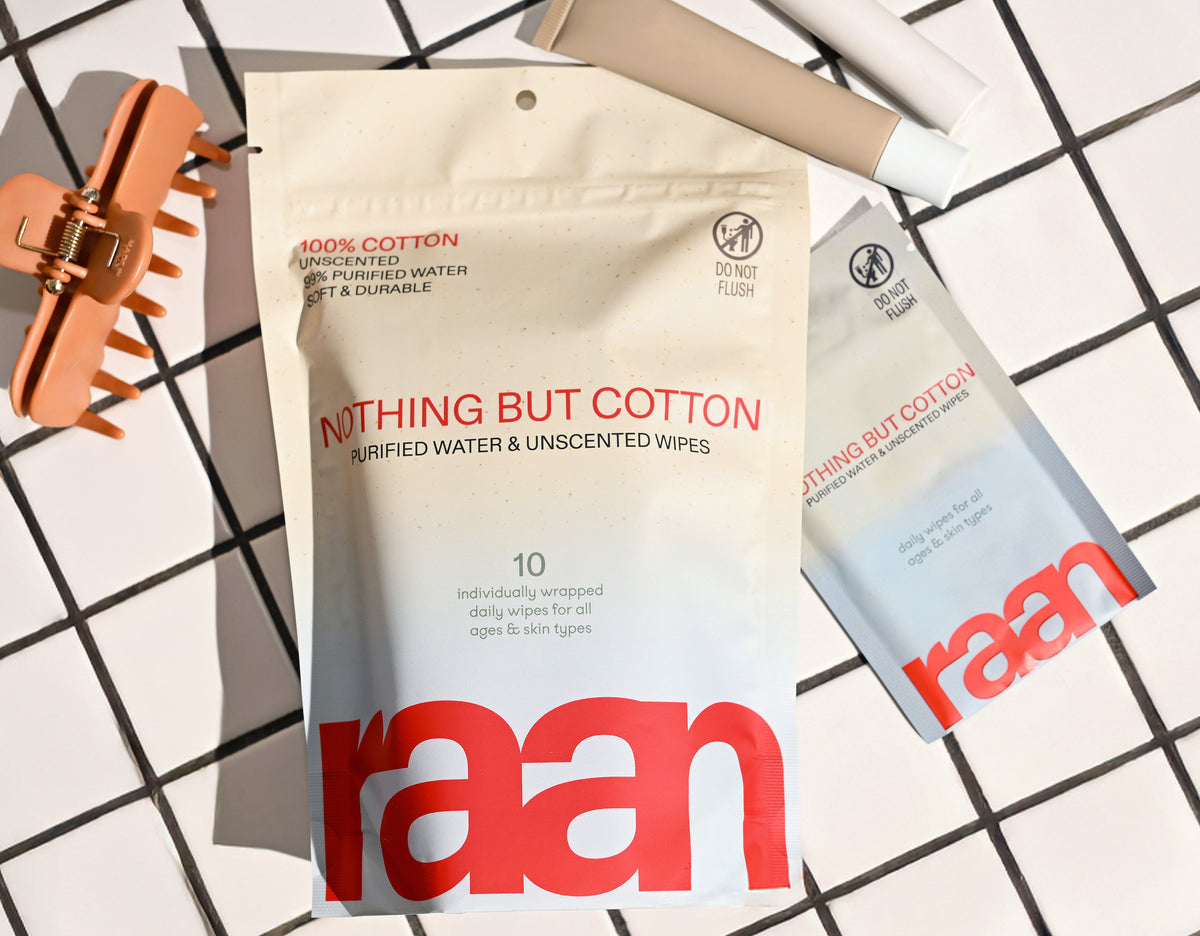Key Takeaways
- Wet diapers are a vital indicator of a baby’s hydration and overall health.
- Understanding diaper saturation helps parents monitor feeding success and wellness.
- Proper care methods vary depending on whether you use disposable or cloth diapers.
- Recognizing normal wet diaper frequency reduces parental guesswork and anxiety.
- Monitoring wet diapers transforms a routine task into a reassuring health checkpoint.
Table of Contents
- What Actually Makes a Diaper "Wet"
- How to Tell if a Diaper Is Wet (Without the Guesswork)
- Normal Wet Diaper Frequency: What to Expect by Age
- Wet Diaper Changes: When and How Often
- Choosing the Right Diaper for Heavy Wetters
- Cloth Diaper Wet Care: Storage, Washing, and Maintenance
- Troubleshooting Common Wet Diaper Issues
- Wet Diapers and Baby Health: When to Pay Attention
- Sustainable Wet Diaper Disposal and Environmental Impact
- Wet Diaper Care for Special Situations
Wet Diapers: Essential Care Guide for New Parents
Navigating diapers wet with urine is one of parenthood's most frequent tasks, and one that carries more weight than you might expect. Beyond keeping your baby comfortable, wet diapers serve as a daily health barometer, signaling hydration levels, feeding success, and overall wellness. Whether you're using disposables, cloth diapering, or considering a switch, understanding saturation levels, proper care methods, and normal frequency patterns transforms this routine task into a reassuring checkpoint rather than guesswork.
This guide delivers grounded, science-backed insights on wet diaper detection, frequency expectations, and care methods, all rooted in function, not fear. From absorption mechanics to troubleshooting leaks, you'll gain the confidence to handle wet diapers efficiently while supporting your baby's skin health. Unbleached, 100% cotton baby wipes are an excellent choice for sensitive skin during every change.
For parents seeking a convenient, on-the-go solution, individually wrapped cotton pocket wipes make diaper changes easier wherever you are.
What Actually Makes a Diaper "Wet"
A wet diaper contains urine absorbed to varying degrees, depending on your baby's age, fluid intake, and wear time. Disposables use superabsorbent polymers that lock moisture into gel form, capable of holding 15-30 times their weight in liquid. Cloth diapers rely on natural fibers, cotton, bamboo, or hemp, that absorb and distribute liquid throughout fabric layers, typically holding 8-12 times their weight.
Understanding saturation helps you gauge change timing and assess hydration. A "fully saturated" disposable feels heavy and may show gel crystals on baby's skin, while saturated cloth diapers feel dense and may leak if compressed. The distinction between wet (urine only) and soiled (feces present) matters, wet changes are simpler and less urgent than soiled ones.
Absorption Reality Check
Newborn diapers hold 7-10 oz of liquid, while toddler sizes can absorb 20+ oz. However, comfort and skin health deteriorate well before maximum capacity, change when diapers feel heavy or show saturation indicators.
How to Tell if a Diaper Is Wet (Without the Guesswork)

Checking for wetness should be quick and confident. Most disposable diapers feature wetness indicators, thin yellow lines that turn blue when moisture activates the pH-sensitive dye. These indicators respond to urine's alkaline nature, providing reliable visual confirmation without undressing your baby.
For cloth diapers or disposables without indicators, use tactile methods. Gently press the diaper's front panel, wet diapers feel noticeably heavier and may show slight compression. The "finger test" involves sliding a clean finger along the inside leg cuff to feel for moisture. Lift your baby to assess weight difference; even moderately wet diapers wet with urine feel substantially heavier than dry ones.
Common false positives include condensation from warm rooms, sweat during fever, or dampness from recent baths. True wetness from urine creates even saturation throughout the diaper's core, while external moisture typically affects only surface areas. For more tips on identifying and managing wetness, see our guide on wet ones.
Normal Wet Diaper Frequency: What to Expect by Age
Wet diaper counts are among the most reliable indicators of adequate hydration and feeding success. Newborns in their first 24 hours may produce only 1-2 wet diapers as they adjust to life outside the womb. By day five, expect 6-8 wet diapers per 24 hours as your milk supply establishes and baby's fluid intake increases.
| Age Range | Expected Wet Diapers (24 hours) | Key Notes |
|---|---|---|
| 0-3 days | 1-3 | Gradual increase as feeding establishes |
| 4-7 days | 4-6 | Milk supply coming in |
| 1 week - 6 months | 6-8+ | Peak frequency period |
| 6-12 months | 5-6 | Solids introduction may reduce frequency |
| 12+ months | 4-6 | More concentrated urine, longer intervals |
After the first month, consistently fewer than 5 wet diapers in 24 hours warrants pediatric consultation, especially if accompanied by lethargy, dark urine, or decreased feeding. Breastfed babies typically produce slightly more frequent, lighter-colored urine than formula-fed infants due to breast milk's higher water content. For more on diaper hygiene and best practices, read our article on clean diapers.
Wet Diaper Changes: When and How Often
Not every wet diaper requires immediate changing, but timing affects skin health and comfort. Newborns with delicate, thin skin need changes every 2-3 hours or immediately after feeding sessions. Older babies with established skin barriers can typically wear high-quality diapers for 3-4 hours without irritation, provided the diaper isn't fully saturated.
Assess change timing based on saturation level, time of day, and your baby's skin sensitivity. During daytime, change diapers wet with urine when they feel heavy or show wetness indicators.
Overnight changes require a different approach. Most babies can sleep comfortably in a wet diaper for longer periods if it's not fully saturated. Use overnight-specific diapers with higher absorbency, and only change if your baby wakes uncomfortable or if the diaper feels completely heavy. Apply barrier cream before bedtime to protect skin during extended wear.
For cloth diapers, consider adding hemp or bamboo inserts for extra absorption during long stretches. The goal is preventing leaks while preserving sleep, both yours and your baby's.
Choosing the Right Diaper for Heavy Wetters

Heavy wetters need more than standard absorbency. These babies produce larger volumes of urine due to higher fluid intake, longer sleep stretches, or individual physiology. Standard diapers may leak overnight or during long outings, leading to disrupted sleep and potential skin irritation.
Look for diapers with enhanced absorbency features: double leg cuffs that create better seals, wider absorption cores that distribute moisture evenly, and materials that wick wetness away from skin. In disposables, this means superabsorbent polymers distributed throughout the core rather than concentrated in one area.
For cloth diapers, heavy wetters benefit from natural fiber combinations, hemp and bamboo inserts layered with cotton provide superior absorption without bulk. Pocket diapers allow you to customize absorbency by adding boosters where your baby needs them most. Consider sizing up for overnight use, as a slightly larger diaper provides more absorption capacity without compromising fit during active daytime hours. If you’re looking for a convenient starter bundle, the starter set is a great way to try multiple solutions at once.
| Diaper Type | Best Absorbency Features | Heavy Wetter Solutions | Overnight Performance |
|---|---|---|---|
| Disposable Standard | Basic polymer core | Size up or switch brands | 6-8 hours typical |
| Disposable Overnight | Enhanced polymer distribution | Double leg cuffs, wider core | 10-12 hours |
| Cloth Cotton | Natural absorption | Add hemp or bamboo inserts | 8-10 hours with boosters |
| Cloth Pocket | Customizable absorbency | Layer multiple inserts | 10-12 hours when properly stuffed |
Cloth Diaper Wet Care: Storage, Washing, and Maintenance
Wet cloth diapers require systematic care to maintain absorbency and prevent odors. Unlike soiled diapers, wet-only diapers are straightforward to manage, but improper storage or washing creates problems that compound over time.
Storing Wet Cloth Diapers Before Wash Day
Store wet diapers in a dry pail or wet bag for cloth diapers until wash day, typically every 2-3 days. Dry pail storage prevents mildew and simplifies handling, no need to drain water or deal with soggy diapers. Choose breathable wet bags made from waterproof PUL (polyurethane laminate) that contain odors while allowing airflow. For families who need extra supplies for busy days, the mess-ready pack offers a practical solution.
Avoid sealing diapers wet with urine in completely airtight containers for more than 48 hours. Trapped moisture accelerates bacterial growth and ammonia formation, creating stronger odors and potential staining.
Washing Wet Cloth Diapers Properly
Effective washing removes urine completely and prevents mineral buildup. Start with a cold or warm prewash cycle to flush out urine, followed by a hot main wash at 140°F minimum with cloth-diaper-safe detergent. Use enough detergent, underdosing is the most common cause of lingering odors and reduced absorbency.
Skip fabric softeners entirely, as they coat fibers and create repelling. If your water is hard, add a small amount of Calgon or similar water softener to help detergent work effectively. Rinse until water runs clear to prevent detergent buildup.
Drying and Maintaining Absorbency
Air drying in sunlight naturally bleaches urine stains and kills bacteria through UV exposure. Machine drying on medium heat is faster but can wear elastics over time. Rotate between both methods to extend diaper lifespan while maintaining convenience.
If diapers start repelling, water beads on the surface instead of absorbing, they have detergent or mineral buildup and need stripping. This involves washing with original blue Dawn dish soap or RLR, followed by multiple rinses until water runs clear.
Troubleshooting Common Wet Diaper Issues
Even with proper diapers and routines, challenges arise. These solutions address the most frequent wet diaper problems with specific, actionable fixes.
Wet Diaper Leaks (Especially at Night)
Leaks typically stem from poor fit, insufficient absorbency, or delayed changes. Check that leg cuffs sit snugly in the groin crease and the waistband sits at the belly button level. If the diaper sags or gaps appear, size up, a too-small diaper can't contain normal urine output effectively. For overnight leaks with diapers wet from extended wear, consider overnight-specific disposables with enhanced absorption or add a hemp booster to cloth diapers before bedtime.
Position changes matter too. Ensure the diaper's absorbent core covers the area where your baby typically wets most, usually toward the front for boys, more centered for girls. If leaks persist despite proper fit, the diaper may have reached its absorption limit faster than expected.
Wet Diaper Rashes and Skin Irritation
Prolonged contact with urine creates the perfect environment for diaper rash, even in highly absorbent diapers. Urine naturally breaks down into ammonia over time, which irritates delicate skin and creates that sharp, stinging smell you might notice during changes.
Change wet diapers promptly, especially overnight when babies sleep longer stretches. Apply a zinc oxide barrier cream if redness appears, creating a protective layer between skin and moisture. If rashes persist despite frequent changes, examine your routine: cloth diaper users should check for detergent residue buildup, while disposable users might need to switch brands if materials are triggering sensitivity.
Look for rashes that appear bright red with defined borders (likely ammonia-related) versus rashes with white patches or satellite spots (possibly yeast, requiring different treatment). When in doubt, consult your pediatrician rather than trying multiple products. For more on diaper rash prevention and skin care, you may also find this resource from the American Academy of Pediatrics helpful.
Persistent Odors in Cloth Diapers
Strong ammonia or barnyard smells signal detergent buildup or insufficient washing, both fixable with targeted action. Run a strip wash using hot water with a small amount of original blue Dawn dish soap or RLR laundry treatment, followed by multiple rinses until water runs completely clear.
If odors return quickly after stripping, increase your regular detergent amount, underdosing is the most common cause of persistent smells. Test your water hardness, as hard water requires more detergent to clean effectively. For severe cases, sanitize with a diluted bleach solution (1 tablespoon per gallon of hot water), then rinse thoroughly.
Prevention works better than correction: wash every 2-3 days maximum, use adequate detergent, and ensure your hot water reaches at least 140°F during the main wash cycle. For more information on best practices, see this CDC diapering hygiene guide.
Wet Diapers and Baby Health: When to Pay Attention

Wet diaper frequency serves as your most reliable indicator of hydration and feeding success, especially in newborns who can't communicate thirst or discomfort. Tracking diapers wet over 24-hour periods provides clearer patterns than counting individual changes throughout busy days.
Red flags vary by age but generally include fewer than 6 wet diapers in 24 hours after the first week of life, dark yellow or orange-colored urine, or crying without producing tears. Newborns in their first few days follow different patterns, expect just 1-2 wet diapers on day one, increasing to 6+ by day five as feeding establishes.
Increased wetness can also signal concern. Sudden jumps in wet diaper frequency, especially with excessive thirst or irritability, warrant pediatric evaluation. Keep a simple log during the first few months: date, time, and whether the diaper was wet, soiled, or both. This data proves invaluable during checkups or if concerns arise.
When to Contact Your Pediatrician About Wet Diapers
- Fewer than 6 wet diapers in 24 hours after the first week
- Dark, concentrated urine or strong ammonia smell
- Crying without tears or signs of dehydration
- Sudden changes in normal wetting patterns
- Blood in urine or persistent diaper rash despite proper care
Sustainable Wet Diaper Disposal and Environmental Impact
Each disposable diaper requires an estimated 500 years to decompose in landfills, with wet diapers contributing significantly to this waste stream. While disposal options remain limited, understanding the environmental trade-offs helps inform more conscious choices.
Biodegradable disposables offer some improvement but still require industrial composting facilities, rarely available for household waste. The most effective reduction strategies focus on minimizing total diaper use: proper sizing reduces leaks and unnecessary changes, while hybrid approaches (cloth at home, disposables for outings) can cut waste by 50-70%.
Cloth diapering eliminates disposal waste but requires water and energy for washing. The environmental math favors cloth when diapers are used for multiple children, washed in full loads with efficient machines, and air-dried when possible. Line-drying wet cloth diapers also naturally bleaches stains and kills bacteria through UV exposure.
For families committed to disposables, focus on efficiency: choose high-absorbency options to extend wear time, use reusable wipes to reduce overall waste, and consider transitioning to cloth part-time as your confidence grows. For more product comparisons, see our article on best infant diapers.
Wet Diaper Care for Special Situations
Travel and On-the-Go Changes
Portable diaper changes require strategic packing and realistic expectations. Choose compact, high-absorbency diapers to reduce bulk in your diaper bag, and pack one extra for unexpected messes. Individually wrapped cotton wipes are a practical addition for quick, gentle cleanups wherever you are. Use a waterproof wet bag to store used diapers until you return home, and always have a change of clothes on hand for both you and your baby. Keeping your essentials simple and functional makes travel changes less stressful and more efficient.
Frequently Asked Questions
How can I accurately tell if my baby's diaper is wet without removing their clothes?
You can gently press the outside of the diaper to feel for dampness or heaviness, which indicates wetness. Some diapers have a wetness indicator strip that changes color when wet, making it easier to check without undressing your baby.
What is the normal frequency of wet diapers for newborns and older babies?
Newborns typically have 6 to 8 wet diapers a day, reflecting good hydration and feeding. As babies grow older and start eating solids, the frequency may decrease, but regular wet diapers remain a key sign of adequate fluid intake.
What are the differences in care and maintenance between disposable and cloth diapers when managing wetness?
Disposable diapers use superabsorbent polymers to lock in moisture and are changed when saturated to prevent leaks and irritation. Cloth diapers absorb liquid through natural fibers and require proper storage and frequent washing to maintain absorbency and hygiene.
When should I be concerned about the number of wet diapers in relation to my baby's hydration and health?
If your baby has significantly fewer wet diapers than expected, especially below 6 per day for newborns, it may signal dehydration or feeding issues. Consistently monitoring wet diaper frequency helps you catch changes early and support your baby’s well-being.






